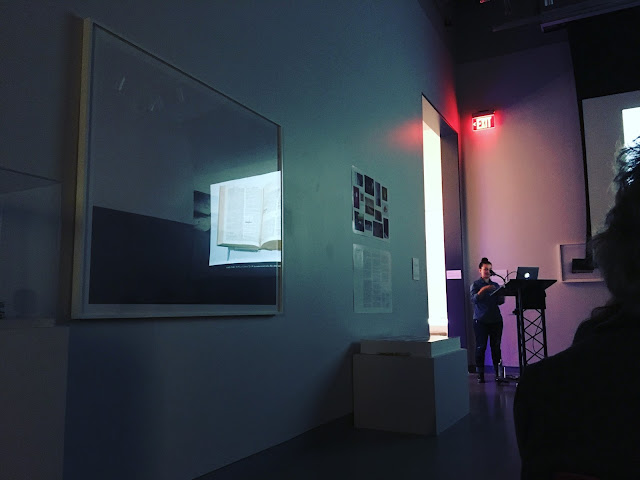 Julie Nelson's exhibit Flora at the McLean County Arts Center was breathtakingly beautiful, in a simplistic way. Julie Nelson is an artist and retired art museum professional in Quincy, Illinois. She received both her BFA and MFA from Northern Illinois University, DeKalb. Nelson is no stranger to art exhibits, as she was the Executive Director and Curator at the Quincy Art Center for twenty years.
Julie Nelson's exhibit Flora at the McLean County Arts Center was breathtakingly beautiful, in a simplistic way. Julie Nelson is an artist and retired art museum professional in Quincy, Illinois. She received both her BFA and MFA from Northern Illinois University, DeKalb. Nelson is no stranger to art exhibits, as she was the Executive Director and Curator at the Quincy Art Center for twenty years.In Flora, Nelson showcased only a selection of thirteen watercolor paintings she created based off floral arrangements she herself created. However, Nelson's technique in handling watercolor completely abstracts the subject matter. Her use of foreground/background, and highlighting which objects to overlap exist in a space only possible in the two-dimensional world.
 |
| Left to Right: Cardinal Flower and Milkweed, Black Petunias, Roses and Sweet Potato Vine, Roses and Delphinium |
Some areas of the paintings are highly detailed, while some are over-simplified. This balance makes her work strong and fluid. Nelson states about her work:
"I look for repeated rhythms in shapes and lines and a push and pulling positives and negatives and lines and areas of color. This begins early on with the selection of elements for the still-life. These works are not meant to be true representations of what I am seeing but spontaneous reactions to the beauty found in nature."
Overall, I think Flora was a successful exhibit. Nelson's personal style and flair is both original and tasteful to the average eye. Although some may view her work as simplistic, I think Nelson was very purposeful in how she generated her watercolors, and that the true beauty and success lies in the details.
"I look for repeated rhythms in shapes and lines and a push and pulling positives and negatives and lines and areas of color. This begins early on with the selection of elements for the still-life. These works are not meant to be true representations of what I am seeing but spontaneous reactions to the beauty found in nature."
 |
| Close up of Red Carnation |
Overall, I think Flora was a successful exhibit. Nelson's personal style and flair is both original and tasteful to the average eye. Although some may view her work as simplistic, I think Nelson was very purposeful in how she generated her watercolors, and that the true beauty and success lies in the details.





